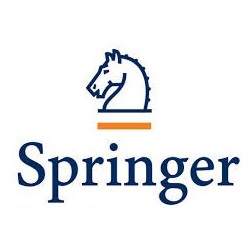INTRODUCTION
Multi-methodology (Mingers, 1997a) is the name given to the practice that combines andlinks techniques, methods and methodologies from the same or different systems thinkingparadigms, Mingers (1997a, 1997b), Mingers and Brocklesby (1996), Jackson (1997, 1999)amongst others. Multi-methodological practices that combine methods from across the hardsoftsystems methods spectrum have been widely reported in Mingers (1997a); Munro andMingers (2002); Brocklesby, J. (1995, 1997); Lane and Oliva (1994) amongst others. Also,over the last years there have been concerns and debate, amongst members of the SystemDynamics community, about SD links with other systems methodologies and about itsphilosophical principles, role and position within more wider social theories, Lane (1999;2001a; 2001b); Vennix (1996); Richardson and Andersen (1995); Vennix, Richardson andAndersen (1997a, 1997b.The paper is largely based on the work of Rodríguez-Ulloa who, after a long action researchwork that started in 1992 and culminating with the formal appearance of SSDM around 1999,Rodríguez-Ulloa (1995, 1999, 2002a, 2002b, 2004). Essentially SSDM can be regarded as asynthesizing and dialectical methodology that emerges from the combination of two widelyused systems-based methodologies from two different systems thinking paradigms, SoftSystems Methodology and Systems Dynamics. The methodology, through its carefulapplication, aims to demonstrate that much can be gained in a systemic intervention. In thispaper, this largely used methodology in Latin American setting is formally re-visit here, andthe main stages of Soft Systems Dynamics Methodology (SSDM) are described in somedetail, emphasizing that this constitutes a new and creative intellectual framework that hasemerged from combining some of the stages of SD and SSM. To some extent, SSDM emerged from combining some of the stages of SD and SSM. To some extent, SSDMunderpins the SD approach by the SSM philosophical principles, concepts and steps; this, in away, resonates with Lane’s claims when he describes to be working in the agent/structure SDparadigm and his Holon Dynamics or Interactive Dynamics approach, Lane (1999, 2001a,2001b). The framework that SSDM proposes can also be seen, in general, in line with theworks of other system dynamics academics and practitioners (Vennix (1996; 1999); Vennix,Akkermans and Rouwette (1996); Vennix, Richardson and Andersen (1997); Andersen andRichardson (1997); Rouwette, Vennix and Van Mullekom (2002); Lane and Oliva (1994),Morecroft and Sterman (1994)).To those in the systems community interested in the application of a combination of systemicmethodologies, the main SSDM’s contribution is that it advances a general framework, withclear steps to follow, which not only helps the analysts (i.e. decision makers) to make senseof the problematical situation but also to model the real world under what it can be called thefeedback paradigm and to intervene in the implementation of systemically desirable andculturally feasible changes in the real world and culminating with a learning process from allthe experience including the implementation of those changes in the real world. We believethat these aspects that SD and the other approaches commentated by the above mentionedauthors have not been tackled. To demonstrate these claims an application illustrating thestages of a systemic intervention using SSDM together with the benefits gained in a realworld problematic situation in a Peruvian organisation and a reflective analysis from thatexperience useful for further research are fully reported.








